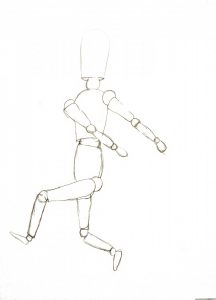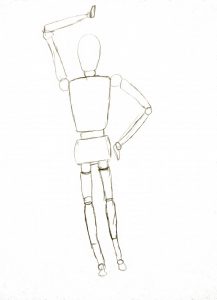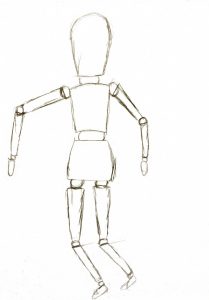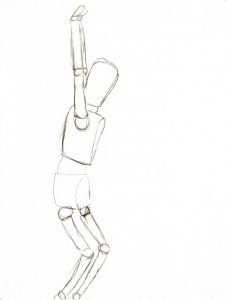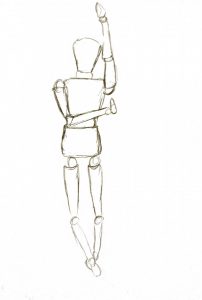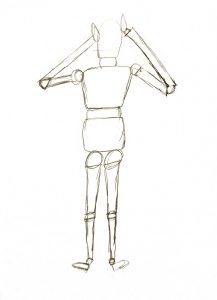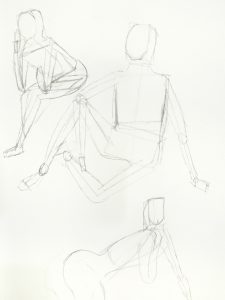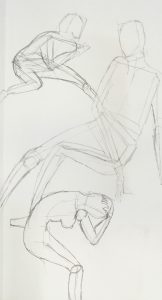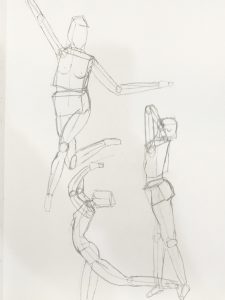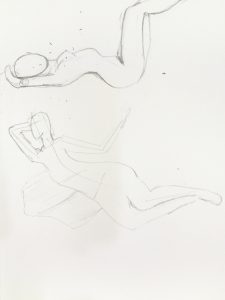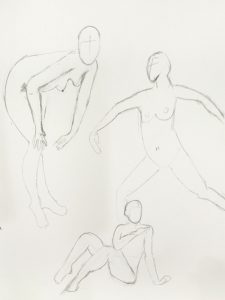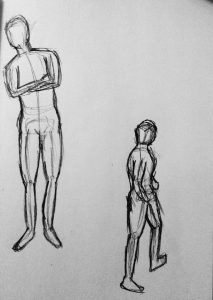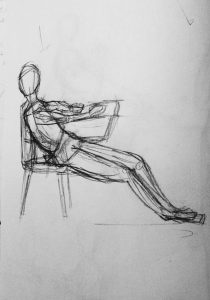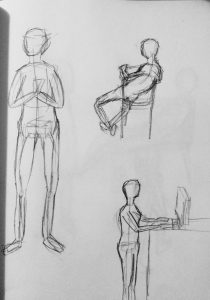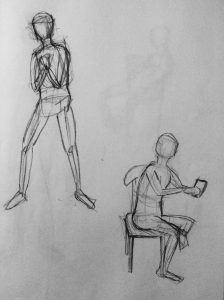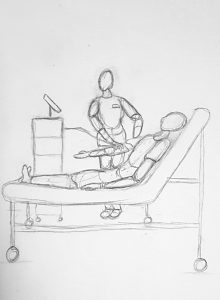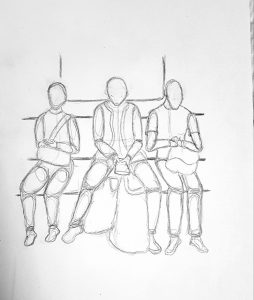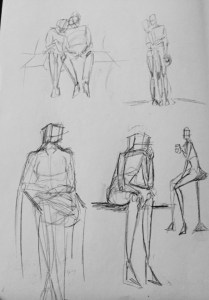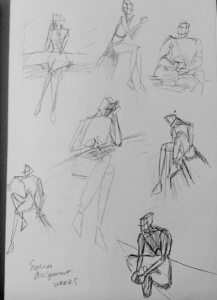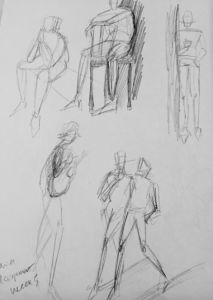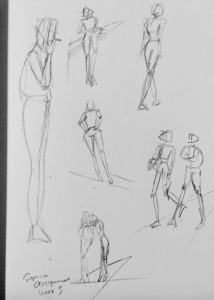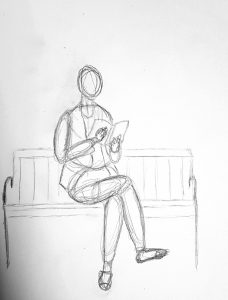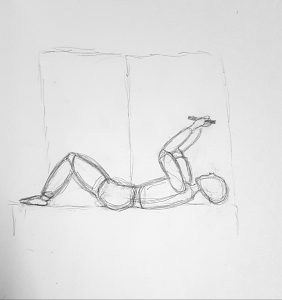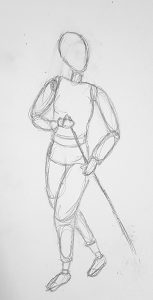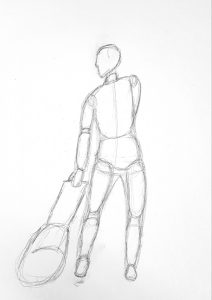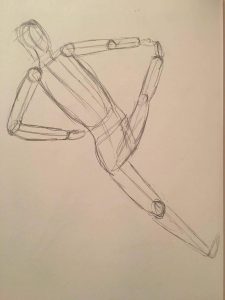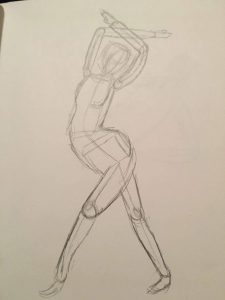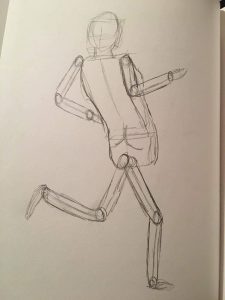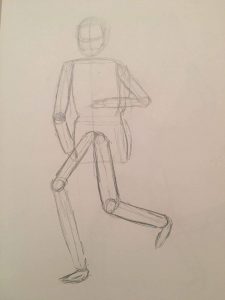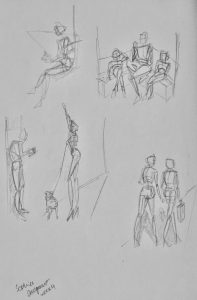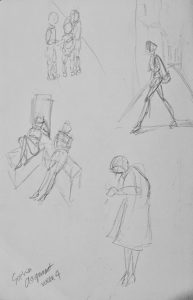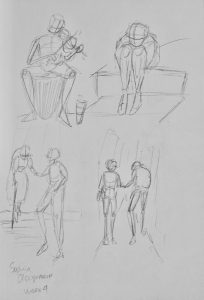Assignment 4 sketches
Assignment 4 sketches
Sketches for week 5
Egon Sheile *Extra Credit*
After reading the article Five Things You Might Not Know About Egon Schiele by Daisy Woodward, I know that Egon Sheil was an Expressionism artist. When I hear Expressionism, it will remind me of painter Vincent Van Gogh. To tell you the truth, I never know Egon Sheil before. When I look at some of Sheil’s figurative painting, I am so surprised that his nude figurative paintings are highly expressive and most of the models were twisting their body. When I am looking at his painting, the colors he used sometimes express the enthusiasm to the sexuality, eroticism, and mortality.
I compared his self-portrait with the photograph of Schiele. I found that he was more handsome than how he drew himself. His self-portrait appeals me to doing more research about him. Schiele was born in 1890 in Tulln, Lower Austria. As a child, Schiele was fascinated by trains and would spend many hours drawing them. At the age of 11 years old, Schiele moved to Krems and was regarded as a strange child: shy and reserved. He behaved poorly at school except in athletics and drawing. Schiele was precocious and had sex with her younger sister at his age of 16.
His father died from syphilis when Schiele was 15 years old. His uncle wanted him to be a railway official, but he recognized Schiele’s talent for drawing and allowed him a tutor: the artist Ludwig Karl Strauch. In 1906 Schiele studied at the Kunstgewerbeschul( School and Arts and Crafts). In the same years, Schile was sent to more traditional Akademie der Bildenden Künste in Vienna. His main teacher at the academy was Christian Griepenkerl. Schile was unsatisfied with his teacher’s strict doctrine and ultra-conservative style, so three years later he left.
Showing his talent in young age, Schiele was interested in Gustav Klimt, who generously mentored younger artists. Klimt bought Schiele’s drawing, arranged models for him and introduced him to the Wiener Werkstätte, the arts and crafts workshop connected with the Secession. In 1908 Shiele had his first exhibition and founded the New Art Group in 1909.
His work was very daring at that time. His figurative distortions included elongations, deformities, and sexual openness. In that conservative period, he bravely expressed his desire to sexuality. I think he was an evolutionary fighter at some point.
Let’s take Woman with Black Stockings as an example. Through his highly expressive portraiture, I can not only feel the strong sexual passion from Schiele but also can guess Shiele was imaging the woman was willing to have sex with him. Through how he dressed his model and how he posed his model, I can feel his fascination of the female form.
Assignment 4, Volumetric Drawing
Week 4 Sketches.
Sketch 4
Assignment 4, Volumetric Drawing
Egon Schiele (Extra Credit)
Before starting this assignment, I had never heard of Egon Schiele. I was aware of the works of Expressionist artists such as Franz Marc and Ernst Ludwig Kirchner, but after observing some of Schiele’s work, his use of twisted body shapes and expressive lines mark the artist as an Expressionist as well. He is noted for his intensity and raw sexuality. Just at first glance, Schiele’s paintings are so striking that you find yourself observing his work for a long period of time. His earlier work also resembles that of Gustav Klimt and Vincent Van Gogh. To my surprise, Klimt saw great talent in Schiele and took time to mentor him. He introduced the young artist to models, patrons, and other artists such as Van Gogh. Klimt even went so far as to buying some of his paintings and organizing several exhibitions for the for Schiele.
Looking through his vast collection of work, I couldn’t help but notice his self portraits. Unlike his mentor, Klimt, Schiele produced a great number of self-portraits, that showed his interest in sexual expression and suggested a narcissistic personality. With his sudden and untimely death at the young age of 27, his self-portraits give more insight into his life and personality than any other first hand source. “Self-Portrait with Chinese Lantern Plant” is one of his most notably famous works of art. Call it narcissism or confidence, Schiele’s smug gaze at the viewer suggests pride in his artistic talent. But even though he seems to be very proud himself and all he has accomplished so far, the young artist features scars on his face and less aggressive contour.
One word that best describes Expressionistic art would be emotion, which does not lack in Egon Schiele’s work. Vivid imagery, irregular and disjointed contours, and grotesque abstractions of the human figure, best describes his personal artistic style which is held up by the emotions that assist the young artist to express himself creatively.
“Everything is dead while it lives.”

